
Social Workers Delegation 2016
The Social Workers Delegation 2016 is a a Partnership2Gether professional exchange program where the P2G Sovev Kinneret Region will host delegates from cluster communities (Milwaukee, St. Paul, and Tulsa). This professional exchange of eight delegates (six from Milwaukee, one from Tulsa and one from St. Paul) is an important and effective way to create people-to-people connections between Israelis and Americans, focusing on the area of social work. Follow their experiences in this blog below.
Trip Reflections
As I sit looking out my window this morning at 6 inches of freshly fallen snow, I am missing Israel for many reasons.
I am missing the beauty of the land – the olive and carob trees, the valleys, the beautiful Kinneret, the unexpected changes in the landscape…. I missing the people I met with their unbelievable hospitality and warmth. I am missing the inspiring and new thoughts and conversations. I missing the learning- about the society, the Israeli culture, about ongoing stress and conflict, the spirituality and the unique programs.
I am thankful beyond words for the powerful and inspiring trip, for the important connections and friendships made and for all your efforts to make this trip, a trip of a lifetime for me. I will forever be grateful and have memories to last a lifetime. And, I look forward to sharing the many meaningful experiences and love of Israel with our community. Please know my home and heart is always open to you!
With love and enormous thanks,
– Dana
Beautifully expressed by everyone! It was a special time for me on many different levels. It’s been hard coming back to Kansas. The seminar of course was great, but for me the best part was meeting and being with everyone – such a delight. I don’t think I have smiled so much since the birth of my children (maybe also because we took so many pictures). Hadar, thanks again to you and all the partnership staff in Israel for your kindness/sensitivity …….. and for organizing and managing such a wonderful experience. Looking forward to getting together with the Milwaukee group.
– Steve
I can’t even find the words to express how meaningful and incredible the trip was for me. The hospitality, the kindness, and the warm friendly feelings that I got from everyone American and Israeli. I thank all of you and promise to continue the mission of the Partnership.
– Michelle
Day 8 – NATAL
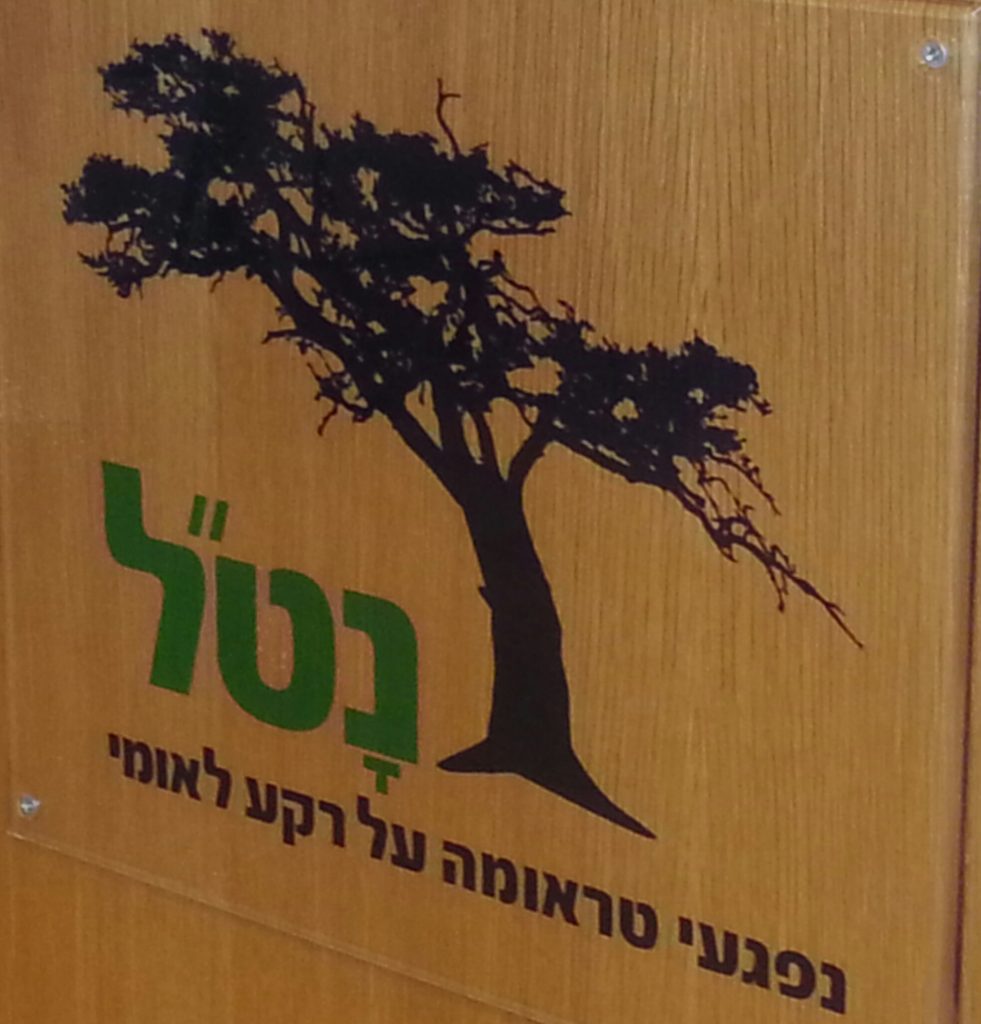
On our last day of the Delegation, we were treated to an informative and inspiring visit to NATAL: Israel Trauma Center for Victims of Terror and War. The center is apolitical, non-profit and provides services throughout the country in an inclusive and culturally competent and sensitive fashion.
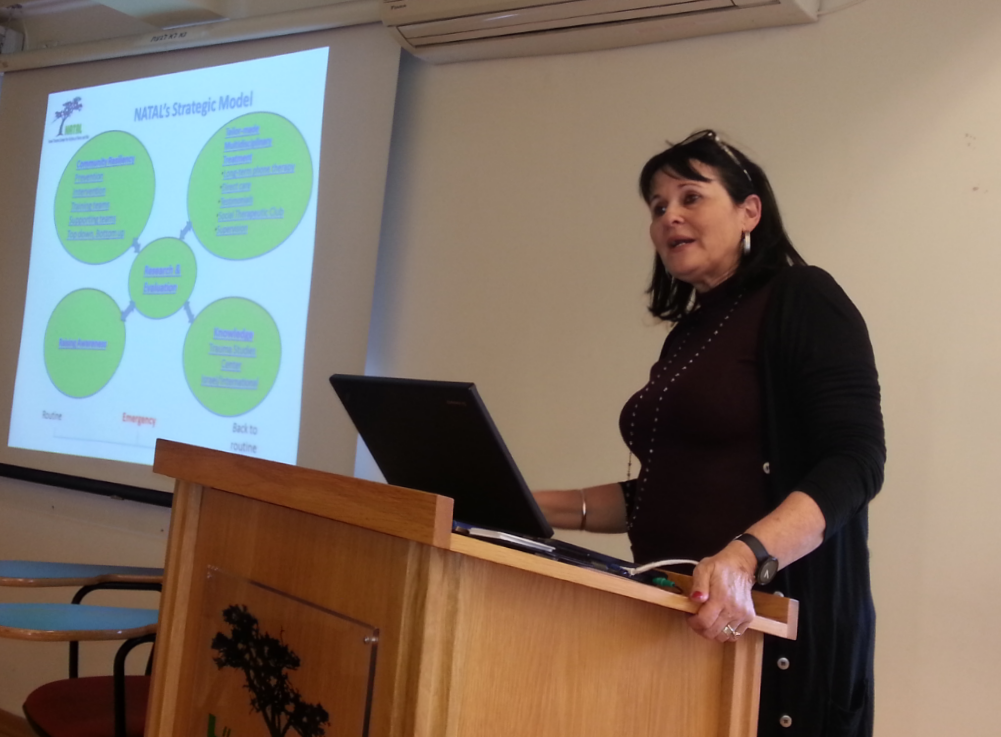
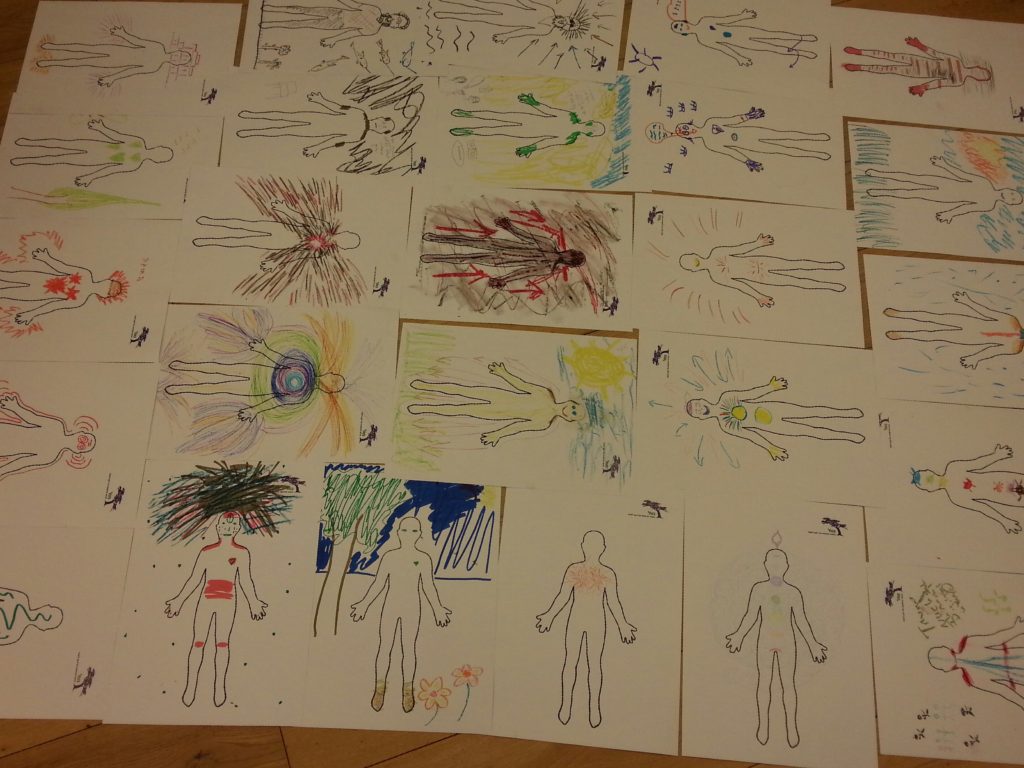
The center provides various interventions, and we were exposed to a brief art intervention that the mobile team utilizes.
Lastly, we learned about the unique helpline where the volunteers go through rigorous training for a year and have to commit to two years of service. Many have been volunteering for 3, 5, and even as long as 8 years.
– Michal Maybello
Day 7 – Shabbat with Israeli Host Families
No entries for this day in observance of Shabbat.
Day 6 – Relaxing before Shabbat
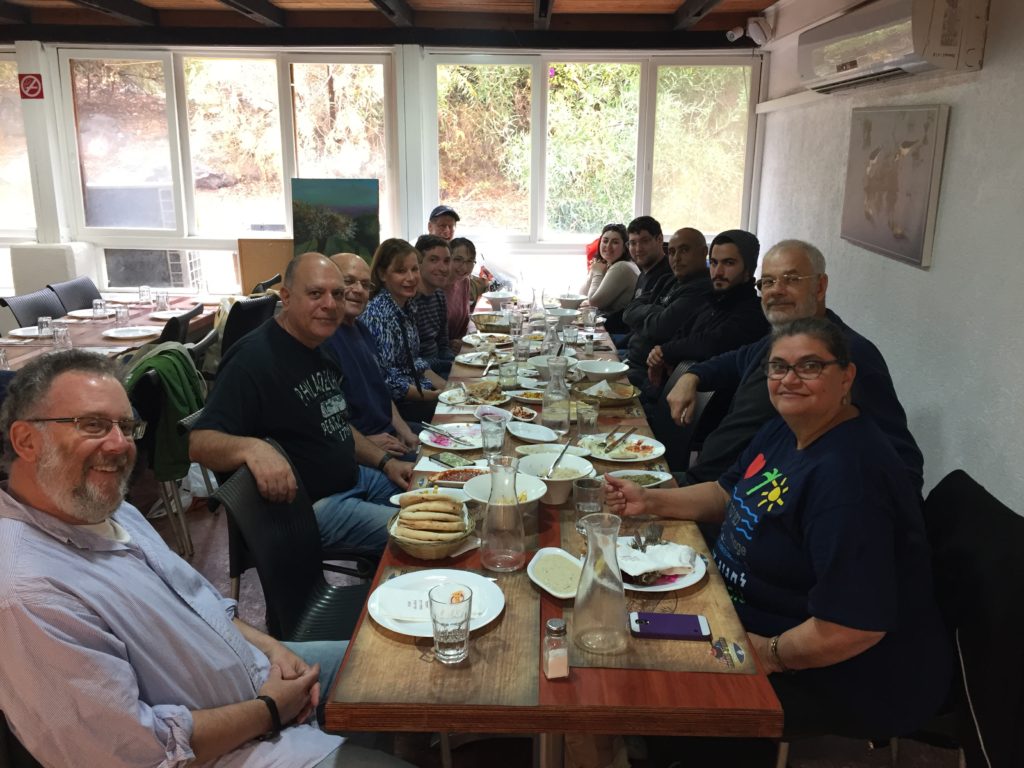
On Friday morning we had the pleasure of enjoying the Hot Springs at Hamat Gader. The combination of the cool rain and the hot sulfur water was invigorating!
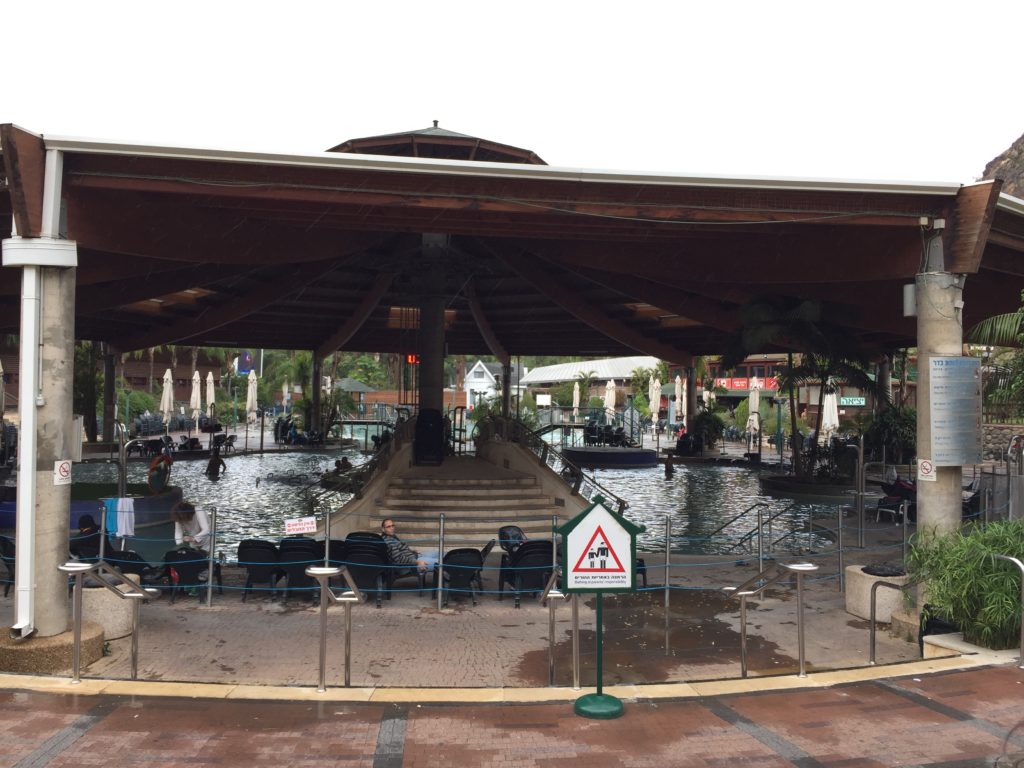
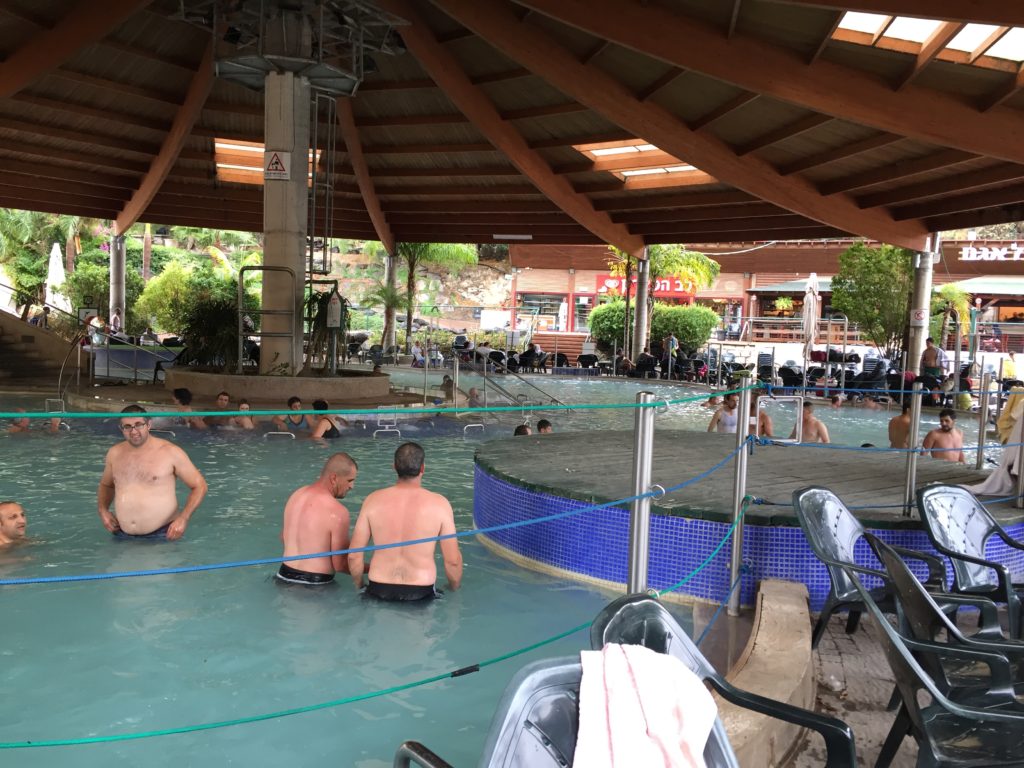
The trip to the Golan Heights was cancelled due to rain. The hot springs were a wonderful way to relax before Shabbat.
– Dana Rubin-Winkelman
Day 5 – Community Building, Rescue and Rehabilitation
Morning: The Binyamin Rotman Regional School for Autistic Teens

The much needed rains finally came to northern Israel as our P2G delegation made its way to The Binyamin Rotman Regional School For Autistic Teens in Kaduri. There, we were met by Bosmat Maoz, the principal of this very special school, and Dov Wolpe, Deputy Mayor of the Lower Galilee Regional Council. Mr. Wolpe explained how a combination of government and private funds were raised to build this state of the art school which opened in 2014. Over the course of a comprehensive tour of the facility, we learned of Israel’s dedication to helping students with special needs reach their full potential and the care and attention to detail that went into the building’s design and program planning.



At present, 56 staff members serve 42 teens, aged 12-21 who are unable to function effectively in regular school environments. No detail in the design and layout of the school was left to chance – classrooms occupy the center of the building while a plethora of therapeutic services are provided in peripheral offices. Almost all students have impaired language skills and Ms. Baoz demonstrated how gestures, individualized image boards, and electronic communication devices are used to engage, teach, and connect with students. We had the opportunity to see ceramics and other art studios, a music class that utilized the latest computer technology, specially designed playground equipment and several remarkable sensory stimulation rooms.

The biggest challenge discussed was how to help students develop the skills necessary to become integrated and productive members of their communities after graduating from school. The delegation marveled at the mock apartment in the school set up to teach older students how to tend effectively to tasks of daily living while even staying overnight with staff supervision. Mr. Wolpe highlighted how plans are being discussed about how to build special homes or even villages for individuals with special needs and their families. Clearly, there is some progressive and enlightened thinking occurring within this school and community at large – a common theme we observed at each of our site visits.
– Mitchell Wittenberg
Morning: Rehabilitation Hermon Prison, Ilabun
The Hermon Prison has three units. Every unit has two managers. In Unit A, every prisoner begins here to adjust to the “working” prison which is the only one of its kind in Israel, amongst one of the few in the world. Unit B is for drug addicts. Here, the prisoners work with social workers, many of whom used to be addicts to see that it is possible to overcome and succeed. In Unit C are 320 prisoners all of which have completed therapy and are drug free, but it’s also for prisoners who have done any type of crime. After prisoners have completed therapy in “C”, they may work in the community without supervision and no uniform. This is community re-integration at its best. In Hermon, prisoners are not allowed to “refuse” therapy. If they do, they are transferred to a “non-working” prison. Prisoners must want to improve themselves to be transferred to Hermon from another prison. These are the facts, but there is so much more positivity and opportunity being instilled in these men here.
The prison itself is very large and is built in the style of a “campus.” It has many buildings and “dorms.” Prisoners are free to go from building to building without permission, but are counted several times a day. Like any government and any prison, there are ever-changing responsibilities and rules. The government recently decided that if a prisoner does not want to change and improve themselves, the staff is responsible to get the prisoner to want to go to therapy and work. One of the staff’s biggest roles is motivating the prisoners to want to get better, receive therapy and see that they have potential to go back into the world and succeed
The prisoners are given a comprehensive care plan constructed by a social worker, education officer, an addictionologist (an MD specializing in addictions) as well as a occupation expert. Ganit, a Major by rank within the prison system and social worker at the prison, met with us to tell us all about Hermon and gave us an all-encompassing tour of the prison. Ganit also explained that in Israel 20,000 men and 200 women make up the Israeli prison system. These prisoners are all ages 18 and up. Statistically, 70 percent of the prisoners return when they do not receive therapy or work in the community during their imprisonment. The number drops to a 32 percent recidivism rate for those that opted for therapy in prison.
The prison itself has a wonderful education program. The program offers prisoners the opportunity to earn their GED, which doesn’t have the prisons name on it, reducing “prison stigma” when applying for jobs in the community. Also, Hermon has an outstanding ADHD program. Studies show that 70 percent of prisoners have ADHD. This program instills self-confidence and helps create positive experiences in school which might not have occurred in the past. Teachers show prisoners that ADHD is a gift and then teach them how to open the presents. Furthermore, Hermon provides language skills by teaching Hebrew to the Arab and Russian populations at the prison. Prisoners also have a wonderful opportunity to earn some money to send back home, save or to utilize while in prison. This opportunity is provided by Naot shoes which are worn worldwide.
Lastly, we were fortunate enough that a prisoner agreed to share his story and time with us. His was a story that was difficult to hear, but at the end he said that he does have the opportunity to leave prison early, but refused because he feels that he has much more growth and groundwork left to cover at Hermon prison. Our few hours at Hermon prison were brief, but full of information. We walked away in the pouring rain with a great sense of respect and appreciation for all of the staff at Hermon prison as we saw that they look at the men as people who have a story and not just a number.
Afternoon: HaDerech Drug Rehabilitation Center (Ilabun)
Social Worker Ruth Steindel explained that “Ha Derech” literally means “the way or the path.” Here addiction to mood altering chemicals is treated as a chronic, progressive disease and recovery as a process. Like diabetes and many others diseases, addiction is incurable but treatable. Their goal is to treat adults who suffer from addictions including drugs, alcohol, gambling and eating disorders in a therapeutic community. Residents come from all over the world and stay for up to nine months on a voluntary basis.
Haderech reports they are the only licensed 12-step treatment facility in Israel and the Middle East. Approximately 60 professional staff in three locations includes social workers who work with patients to find their way to achieve abstinence from their addiction, improved health, wellness and quality of life. Within the recovery community, peers are involved with the healing process. Two current residents shared their stories with us and credit Haderech with saving their lives.
– Susan Esser-Greenberg
Evening: Jordan Valley Welfare Department of Social Workers
Our last event for Thursday was a farewell meeting and joint discussion led by Israeli Social Workers from the Jordan Valley Welfare Department. It took place at the Jordan Valley Regional Council Conference Room. We had a nice dinner.
First, the Mayor of Jordan Valley welcomed us and thanked us for bringing the rain (it was pouring all day). The Jordan Valley social workers considered themselves the ER of social problems. After learning about Israel and what the social workers do, it was now time for them to learn more about us and what we do. So naturally, they had us play an icebreaker. They put out pictures of all us that were taken through the seminar. Then they told us to pick 1 picture that resonates with us and tell the group why. As always, no one took just one picture!!! Throughout all of the presentations, there were two central themes: food and people-connecting and partnering with people. This was why we came, and it was exactly what we did. Then, of course, we ate dinner!
– Michelle Lafferty
Day 4 – Treating Trauma in the Civilian Sector
Morning: Tel Hai College

After a lovely bus ride from our base of operations in Tiberius into the breathtaking Upper Galilee region in the far north of Israel, our P2G delegation rolled into the beautiful and quite modern campus of Tel Hai College. There, we began our education about “Treating Trauma In The Israeli Civilian Sector” with an enlightening lecture by one of Israel’s most accomplished trauma experts, psychology professor Moshe Farchi, Ph.D. Dr. Farchi treated us to a presentation entitled, “Organizing an Emergency Preparedness Network–Coping With Anxiety Victims.”
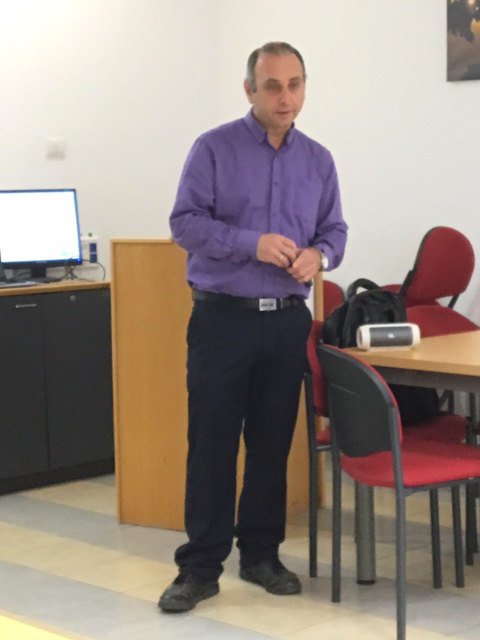
Dr. Farchi’s cutting edge approach combines the latest scientific research knowledge with what he calls “simple strategies” that can be taught not only to helping professionals but to every member of a community. With a masterful way of making complex ideas easily understandable through the use of many true life examples, the professor challenged and upended our natural instincts about how to help people in the throes of a traumatic crisis. For example, one might think that empathizing with a trauma victim’s feelings while in a crisis is the optimal way to soothe and calm them to prevent longer term problems. Yet, we came to see how such an approach only further escalates the very feelings we wish to diminish while fueling feelings of helplessness that set the stage for Acute Stress Reaction or Posttraumatc Stress Disorder.

Over the course of Dr. Farchi’s interactive lecture we learned a host of effective interventions for providing best practices “Psychological First Aid”, and every one us left the lecture invigorated to consider ways we can and will apply our new knowledge in our diverse work settings. A truly enlightening way to begin our day.
– Mitchell Wittenberg
Afternoon: Kiryat shmona, Mooli Lahad Resource Center
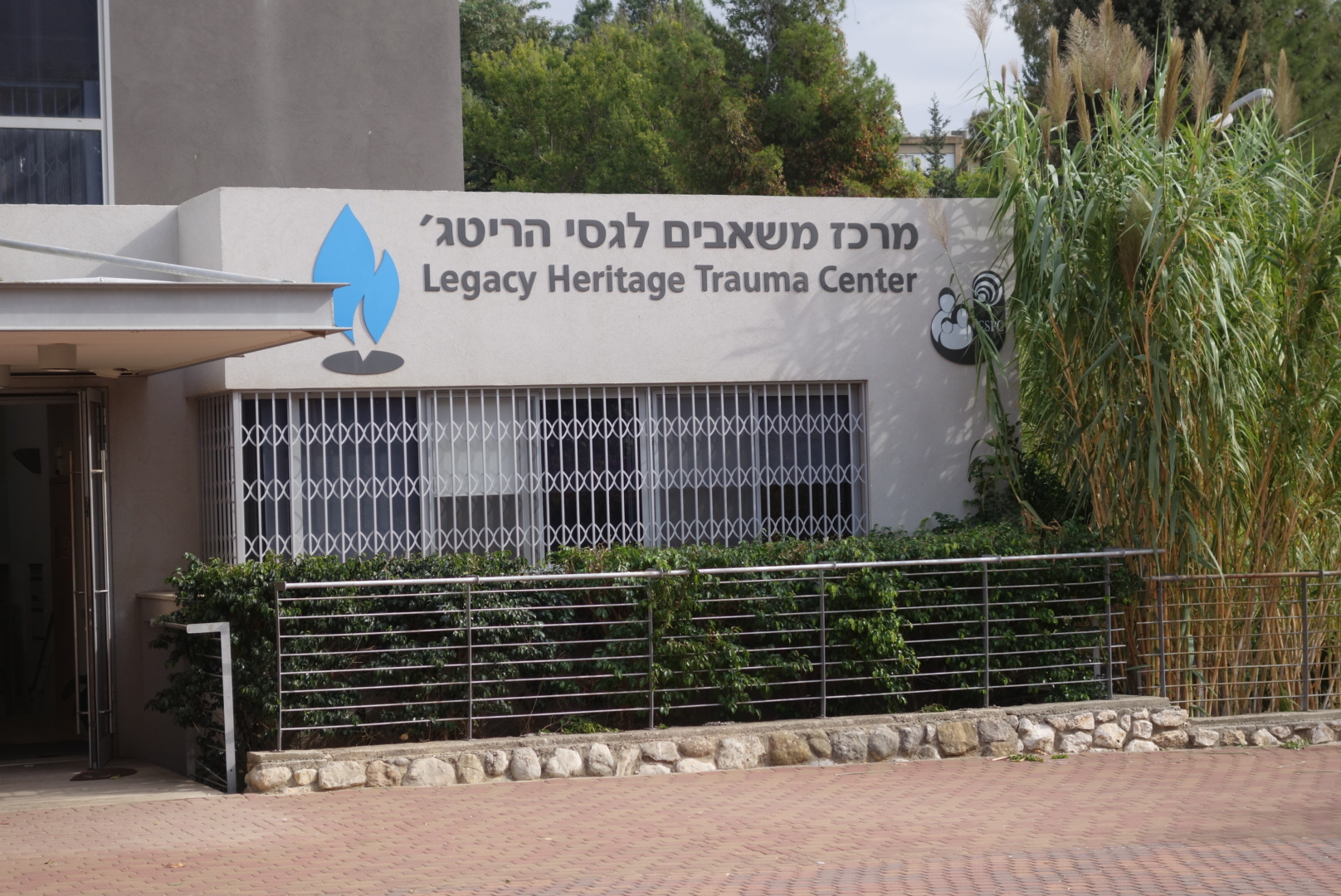
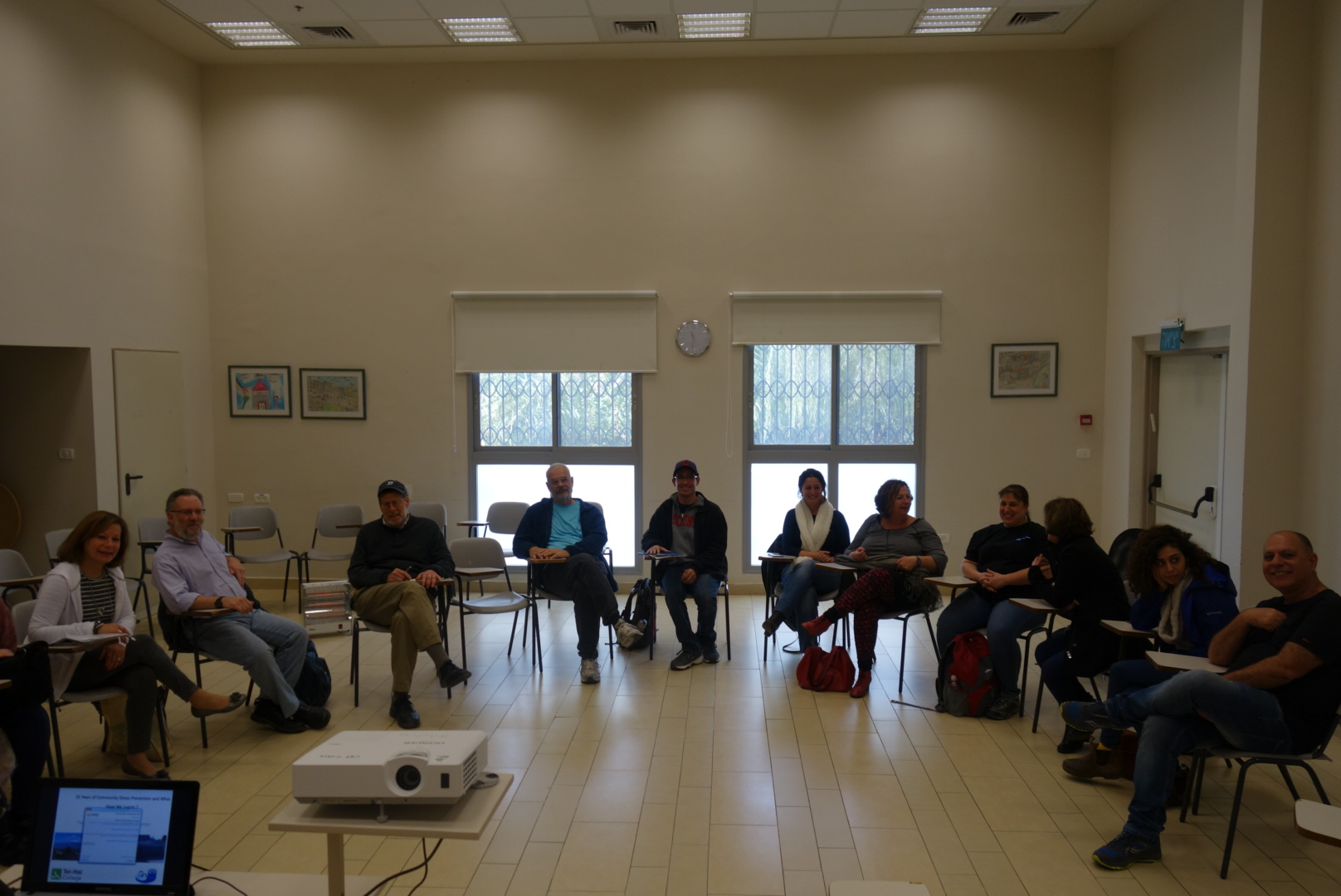
In the early afternoon, we stopped by the Mooli Lahad Resource Center. Professor Kiryat Shmona spoke about using empowerment and utilizing resilience as a method to treat and prevent stress/trauma and how to turn an experience of suffering into growth opportunities. The center consists of psychologists, social workers and school counselors to train and/or treat those receiving services from the center. The center was established in 1980 and with over 35 years the research/projects are now being used around the world to help people/communities respond to natural disasters, conflict and any other traumatic experience.
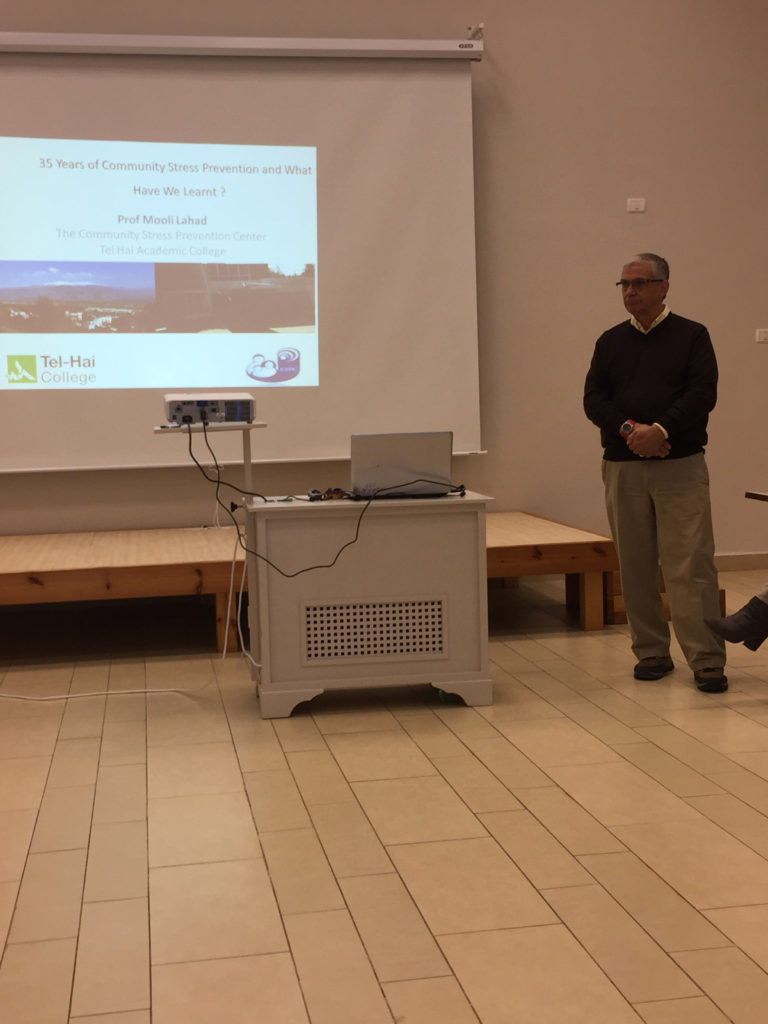
Professor Shmona talked about the importance of the neuro network to create an alternative competing memory in an effort to change the outcome of the trauma response. Another important lesson that was discussed was focusing on enhancing compassion satisfactory as an alternative to compassion fatigue. Social Work is a rewarding field that makes a significant difference for many people and communities. However, it was emphasized that all people need to have a decent level of self care. Our social work delegation group all confidently agreed “we make a difference.”
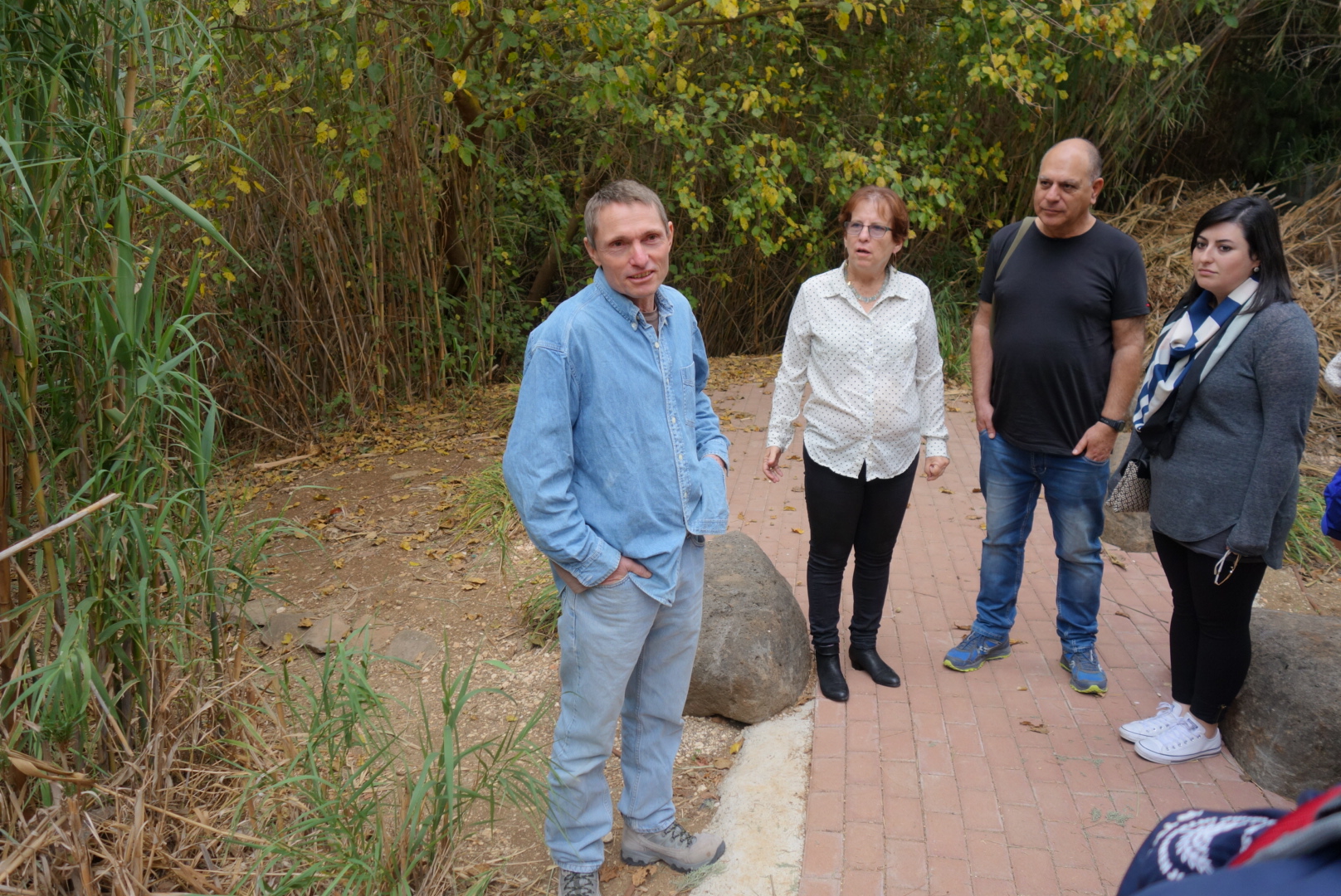
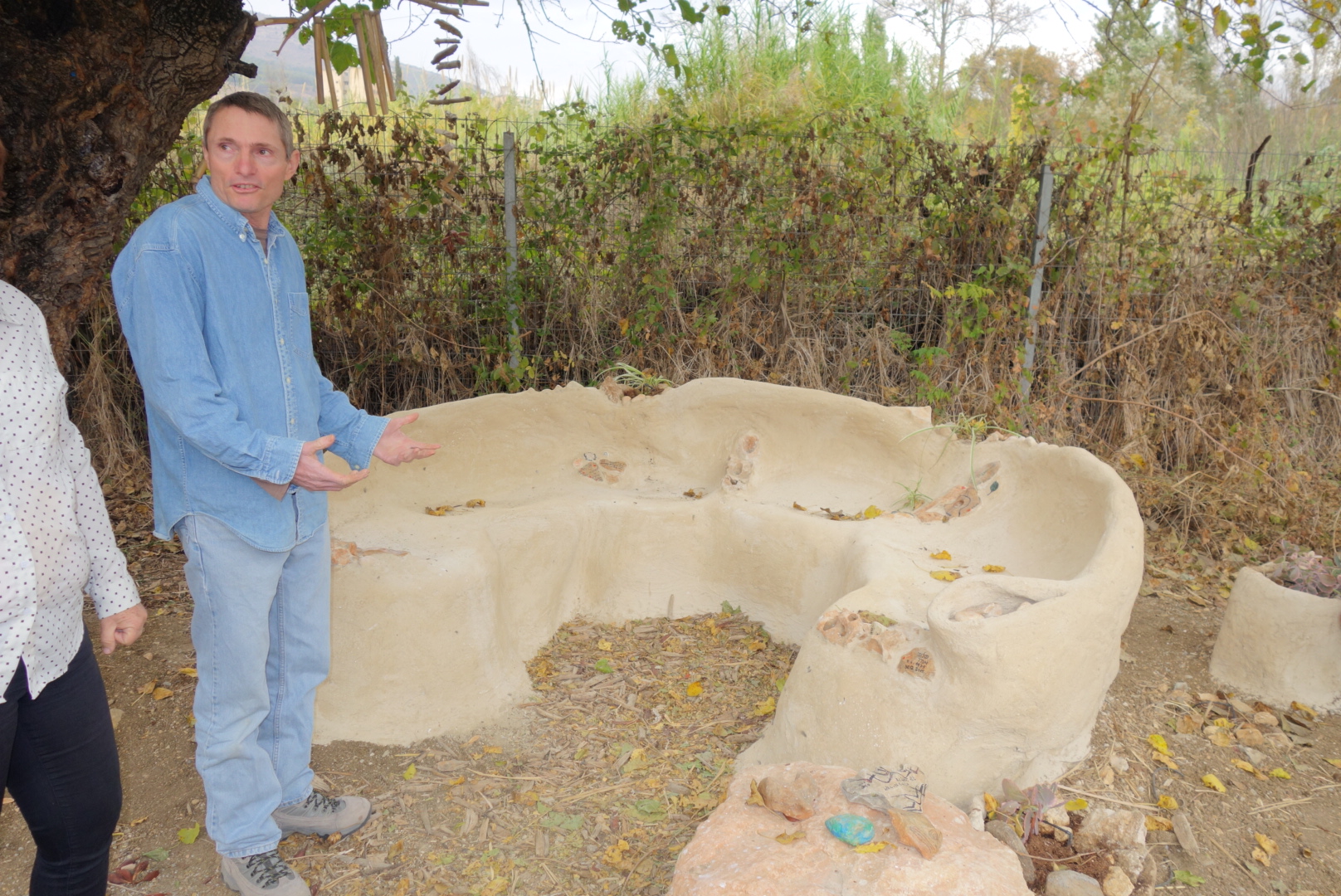
After the presentation we took a walk through the garden in which we learned about nature therapy. The nature therapist explained the therapeutic benefits of growing and building gardens, including planting various plants representing resilience and growth. After the beautiful and peaceful walk, we of course had another delicious meal.
– Greg Parrish
Afternoon: Kibbutz Misgav Am – Meeting with the Upper Gallilee Social Services Department
Wednesday brought another very busy, inspiring and delightful day. Mid afternoon, we attended an interactive talk entitled, “Kibbutz Misgav Am: Meeting with the Upper Gallilee Social Services Department.” Mayor, Giora Salz began with an introduction to the area. He has been a mayor of the Upper Galilee since 2012. Mayor Salz discussed some general background, the children and older adult philosophy of “no one is ever left behind” and the economics/revenue in the Upper Gallilee.
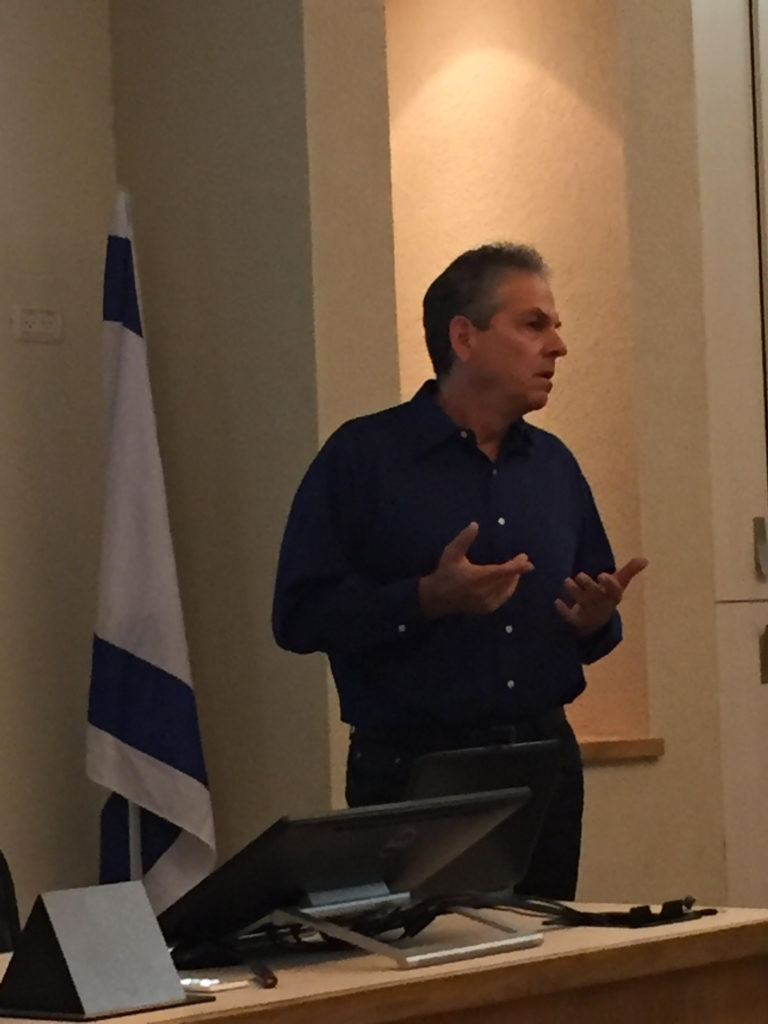
The majority of our time together was spent learning about a very special and important training called “Tzahi.” Hila Geva, a social worker, Ortal Bari, a volunteer for Tzahi, and Zevit Dromi, the social work manager all explained in detail what Tzahi is, why it’s needed and the functions of the response.
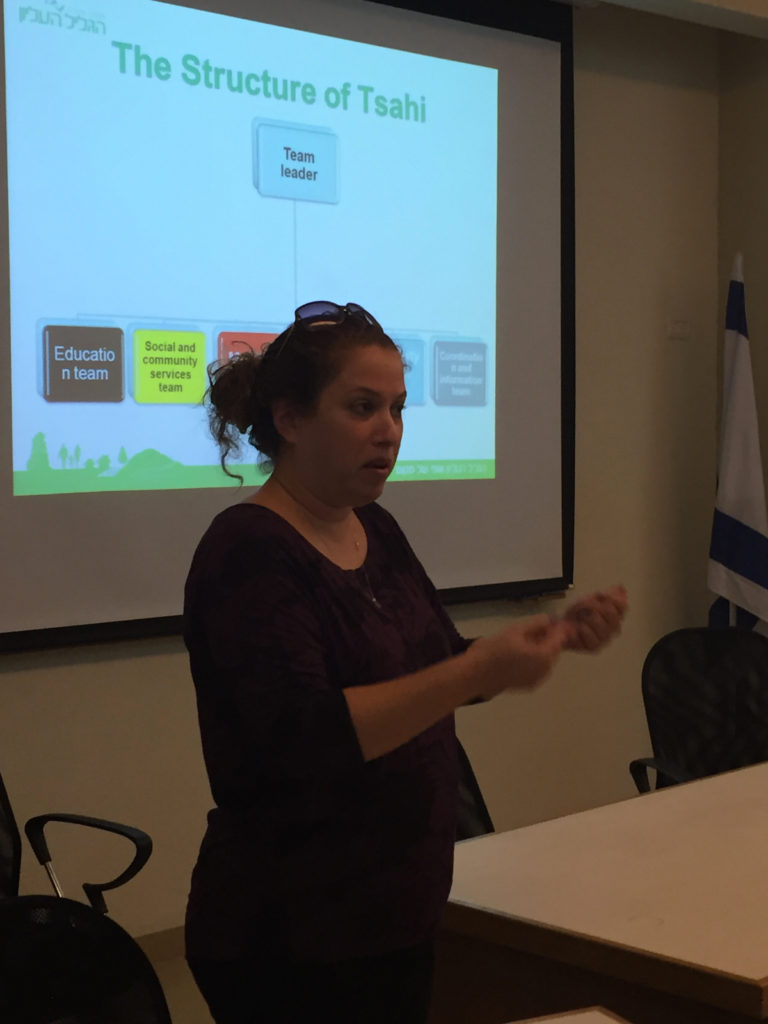
The Upper Gallilee has 29 Kibbutzim, and many sit near the border. Seven actually sit adjacent to the border fence with Lebanon! Consequently, security is a big part of this municipality. Hila is an emergency community team trainer for Tzahi. This program consists of a team of active volunteers (residing on the kibbutz) who have received basic training to serve as a community – wide response and assistance team when emergency and crisis strikes. During war, conflict, or if the area becomes occupied, for example, each community needs to be able to stand alone and help themselves. By training people and preparing them in an emergency, each Kibbutz can help themselves and their neighbors. This organization and management coordinates immediate response, first aid for those injured or need, enables a system for informing the public, and coordinates logistical assistance.
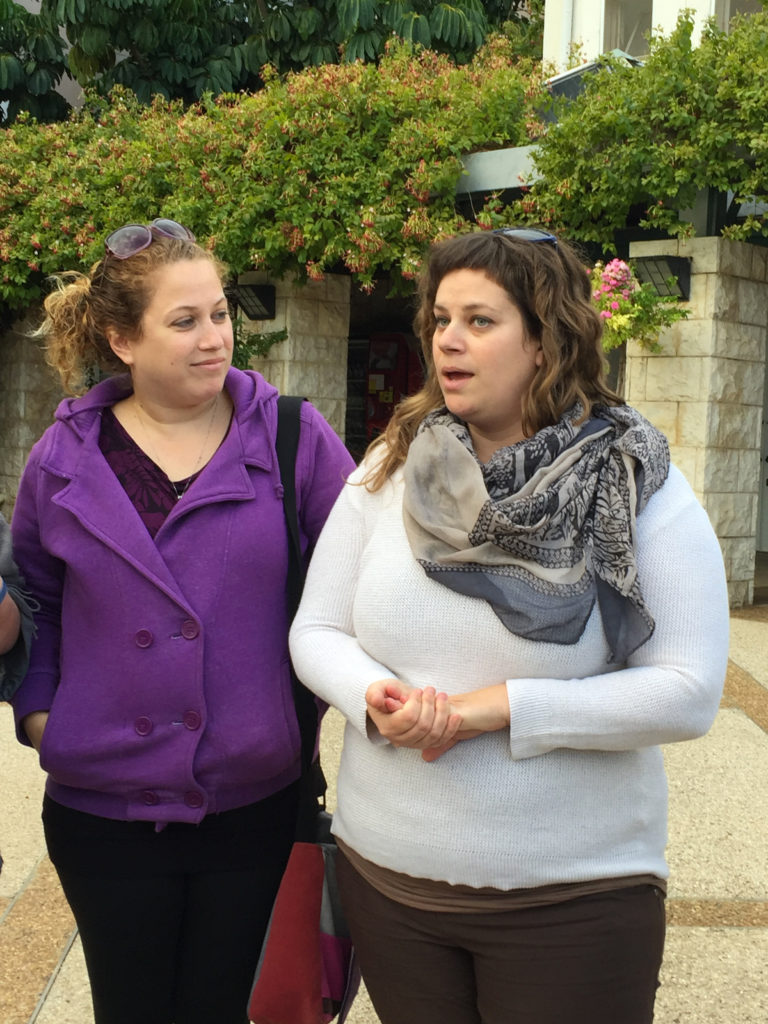
The delightful women that spoke were engaging, informative and eager to answer our many questions. I was impressed how Israel needs to be on constant watch, finding many ways to help its citizens prepare and stay safe. They do frequent emergency preparedness drill’s – ready for any scenario like penetration from the border, taking hostages or first aid. This type of emergency preparedness is not only necessary, but really a way of life.
I found myself moved by Kibbutz life and communal living, and even longed a bit to have had the experience. I know it might sound trite, but I am sincerely grateful for this amazing Jewish state and for all the many beautiful and brave people that live here. I continue to find myself getting teary, saying the “shechechianu”- thanking G-d for this amazing experience and enabling me to be here now.
– Dana Rubin-Winkelman
Evening: Tour of Tzfat and Dinner
As the sun was beginning to set, our mini bus found it’s way up the winding streets to Tzfat. We all looked out the window as we climbed higher and higher. I told my friends on the bus the lovely story related to my work in Milwaukee, loving connections to a family there, and the holy city of Tzfat.
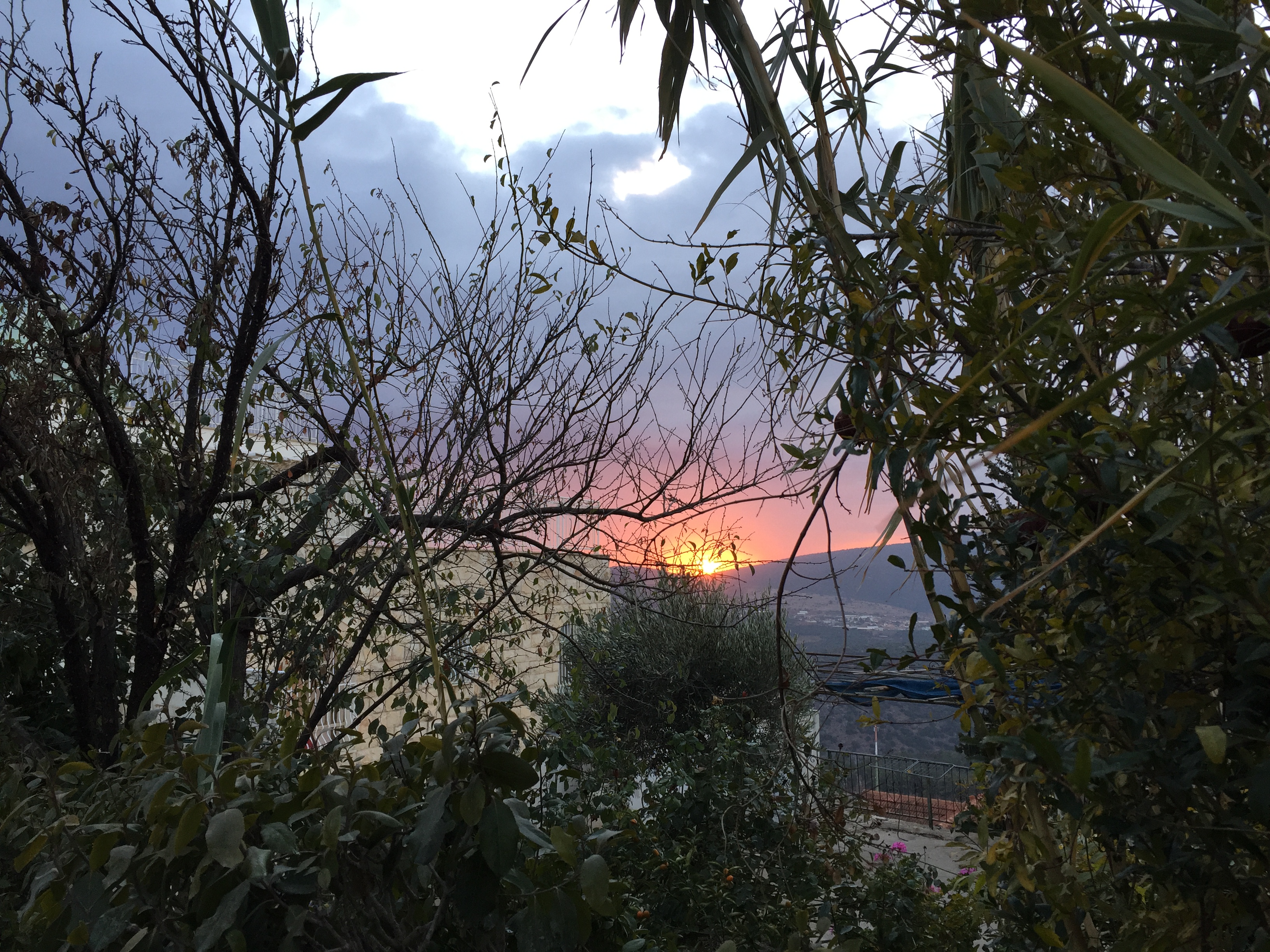
Months ago, after I received one of the initial itineraries for the social work trip, I shared it with a resident family member I had been working with for many years. She explained “since I was so close, I should go just up the hill, and stop in Tzfat.” So, tonight, as I ascended to this mystical place, I held this family in my heart. I thought of them and how I was there because of my close connection and conversation. I felt grateful again.
Rabbi Amichai Cohen met us and gave us a meaningful tour of this spiritual city. He explained that the Meaning of Tzfat comes from the word overlook because it overlooks a fantastic view. In Hebrew it also means to anticipate something. In addition, Tzfat also comes from the words hidden and north. This city gem is tucked away in the most northern city. It is considered a great Kabbalistic city and artist colony.
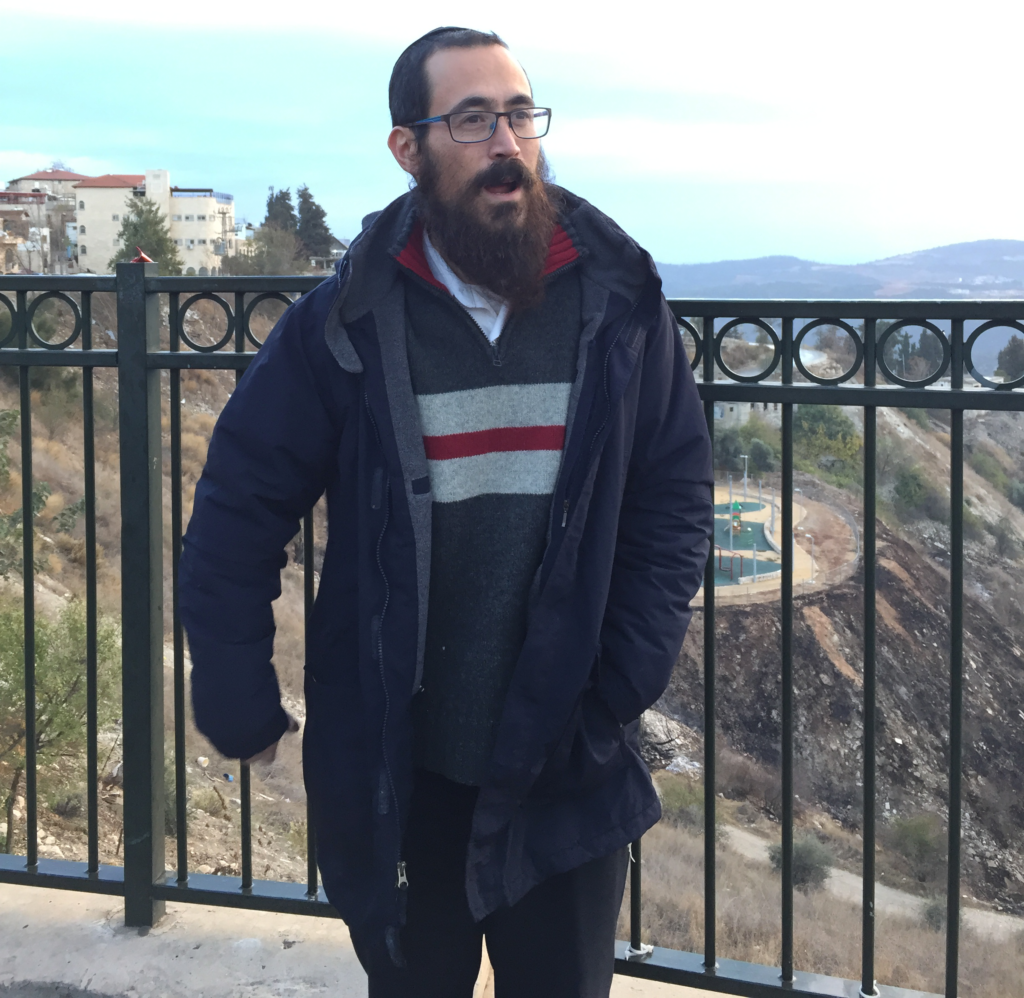
Tzfat encourages one to look a little deeper, possibly looking at the world with a different vantage point, or searching to find a hidden meaning. The Rabbi spoke of looking inward to find the deepest side of who you are. When you do that, he explained, then you can transform.
We saw the Abuhav synogogue, one of the oldest synagogues in tzvat. The synagogue holds the oldest Safer Torah scroll in the world. It is approximately 700 years old! The synagogue only uses it three times a year.
Before the Rabbi left, he said “Tzvat leaves its charm in you, for life. You fall in love with it.” And, I certainly did!
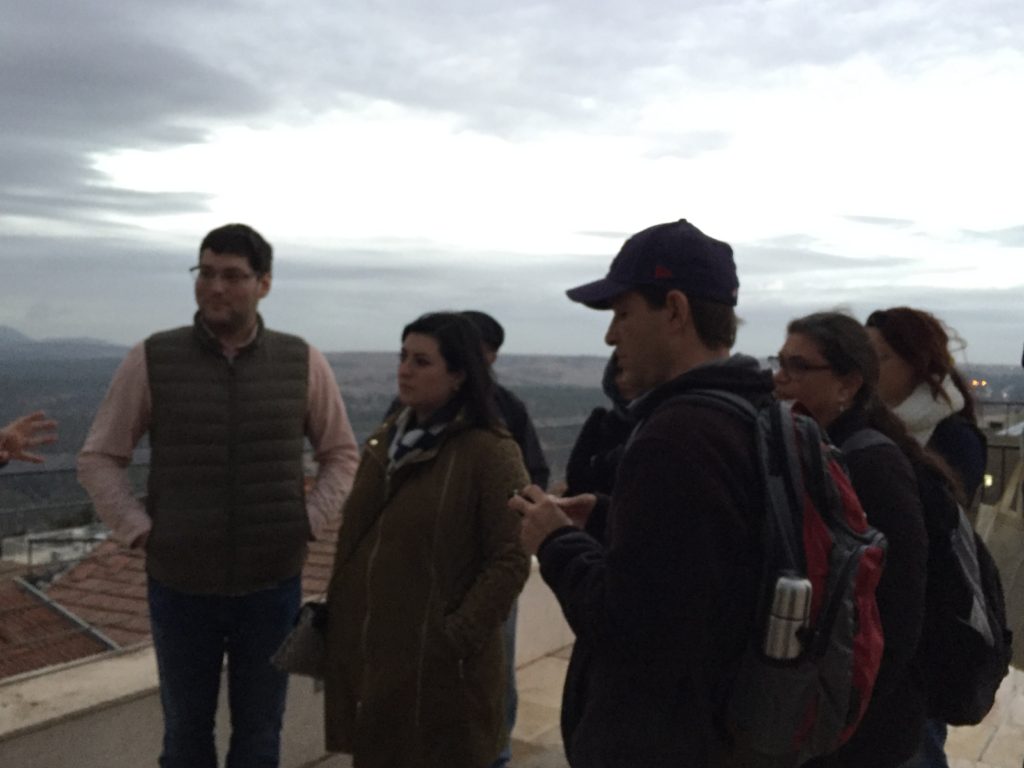
After the tour and sneaking in a bit of quick shopping, we found our way to Roberg Restaurant for another scrumptious meal. Being a vegetarian in Israel is not only easy, but an unbelievable treat. I’m in heaven eating the varied and delicious, fresh salads.
Indeed, Tzfat’s magic surrounds me. When I get back to Milwaukee, all I have to do, is close my eyes, and I am there. …Either that, or convince my parents to watch our children, so I can return! Thank you for another amazing experience!
– Dana Rubin-Winkelman
Day 3 – Rehabilitation and Dealing with Mourning in Israeli Society
Morning: Beit Halochem, Haifa (IDF Disabled Veterans Association)
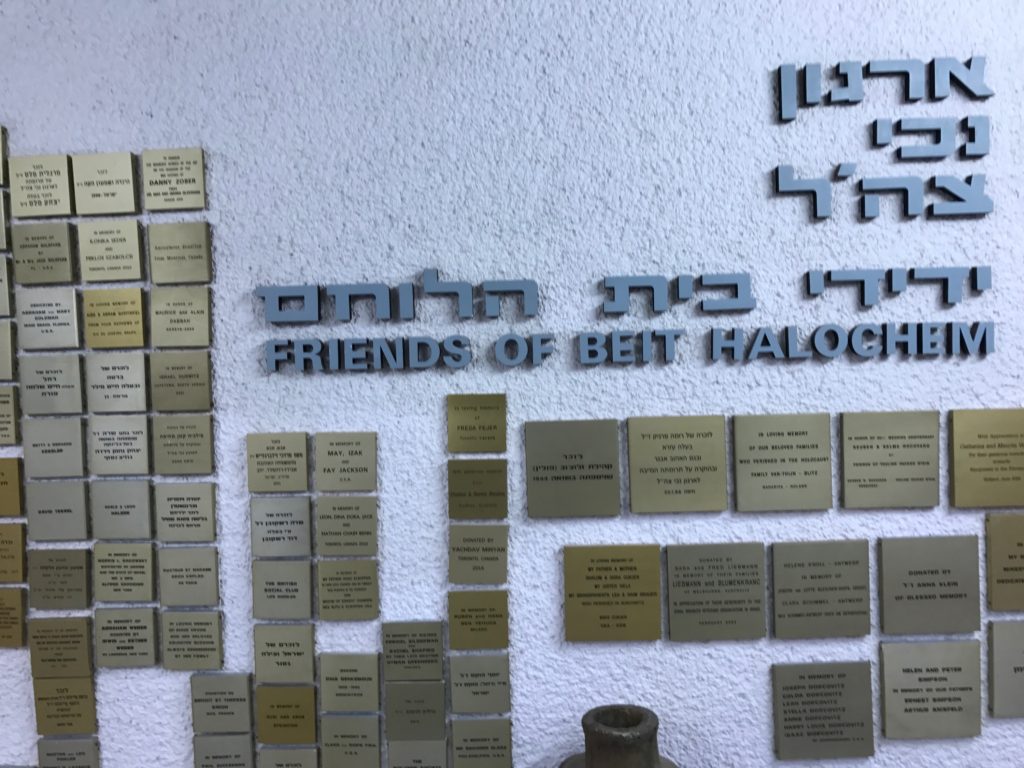
Working as a clinical social worker for the VA medical center in Milwaukee I was very interested in learning about what services are available for disabled veterans in Israel. Tuesday morning we visited Beit Halochem, A rehabilitation program for disabled veterans in Haifa. We met with both the supervisor for physical therapy and their program director. The program has been in existence for about 40 years. There are currently five centers throughout Israel. We were told the newest Center is being built in Jerusalem. Unlike VA medical centers which are if federal government agency, the disabled veterans centers in Israel are nonprofit organizations. No contributions come from Israel’s ministry of defense. Much of the funding comes from private donations. Entering the building you have the feel of being in both an outpatient rehab center and fully equipped JCC.
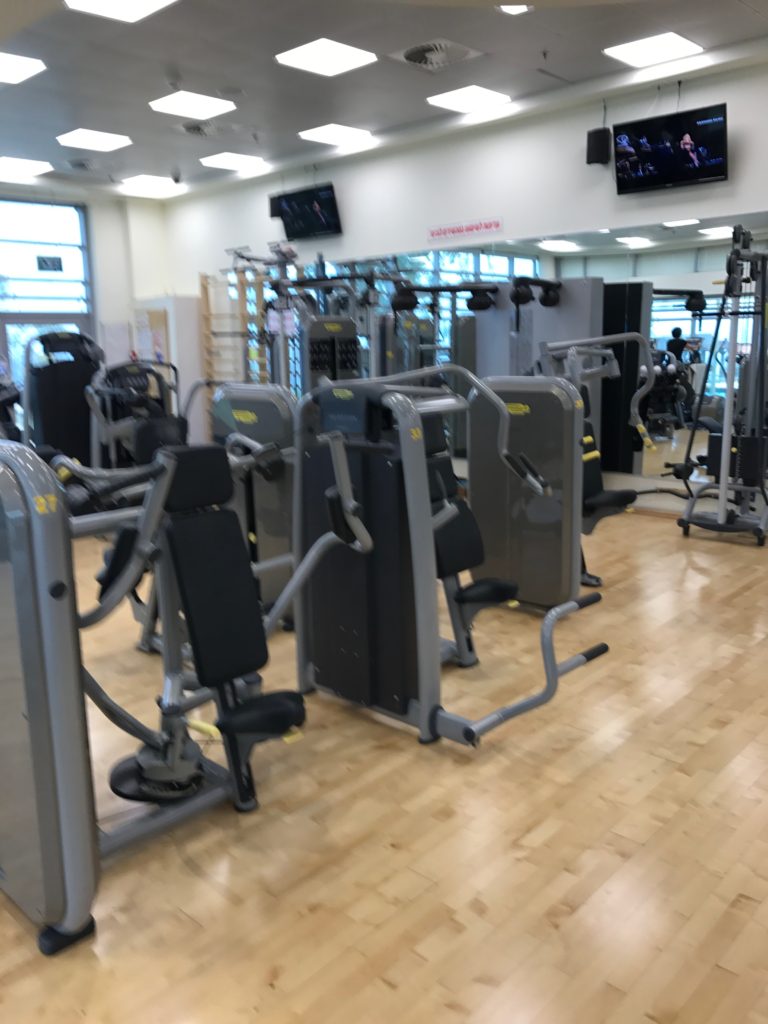
There is a full-size basketball gym with seeds for spectators and either side, full size pool, a separate heated hydrotherapy pool, and The large workout room with state-of-the-art exercise equipment that would match any fitness club that we have in the states.we were told that other social/Recreational activities such as art classes and outdoor water sports. Injured veterans are rated on the basis of the level of their disability from 0 to 100. Their rating level determines the extent of rehab services such as physical therapy that they may receive. All types of physical therapy interventions are provided including spinal cord injury, prosthetics, hydrotherapy, and pain management.
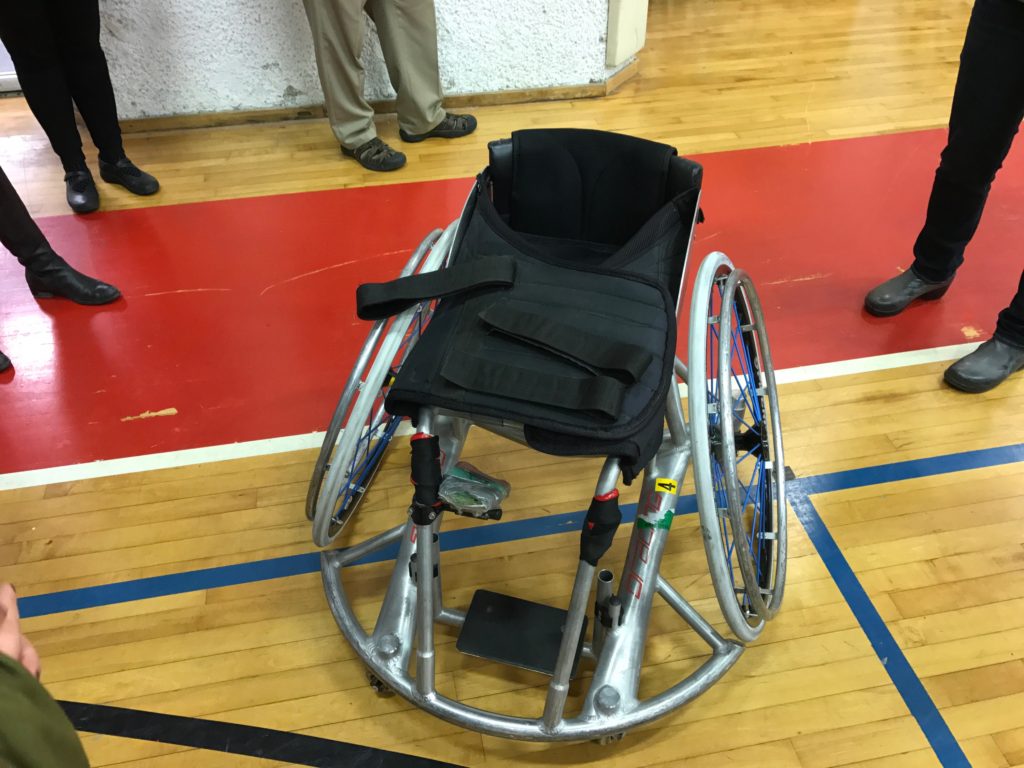
The PT supervisor was booked with indicated that mental health and social work services are not provided at their facility and that patients would we referred to hospitals and clinics that are part of the their national healthcare system. Apparently, this is true with no medications would be prescribed and managed. We did get a tour of the building. I was especially impressed with the friendliness of the staff and veterans that I met, a they have and how most of the 50exercise equipment how are adapted for used by veterans in wheelchairs.
– Steve Eigen
Afternoon: Haifa University
This afternoon, we were fortunate enough to visit Haifa university and have a private meeting with Professor Simon Shimson Rubin, Director of the International Center for the Study of Loss and Bereavement and Human Resilience. Professor Rubin is from a suburb of Milwaukee – that being Chicago – and eventually made Israel and Haifa University his home in the 1980s. The center itself was started in 2010. Professor Rubin went on to talk about the psychological bereavement landscape of Israel, which currently does not have a network for spousal, parental or child loss at this time.
One of the interesting cultural traditions that professor Rubin spoke of is of the Observant Muslim community. This tradition explains that when a women loses her husband she has to immediately chose to move into her deceased husbands family home with her children and marry his brother or leave her children and community behind and move elsewhere. This option poses a huge problem between the relationship of the widow as well as her sister in law, which of course adds stress and tension to the situation. This tradition was very difficult for us to hear and understand as to how this was expected of a women, especially one who was recently bereaved.
Next, the professor shared with us his two world famous bereavement tracks. One is a bio-psychosocial approach evaluating depression at the beginning of the loss, middle of the year, and finally end of the year. The second track is a relational bond, meaning how accessible is the relationship between the deceased and bereaved in terms of ongoing memories and emotions as well as the accessibility of those memories. Dr. Rubin left us with a thought, which was that bereavement in a way is having many windows of your mind going and processing the loss throughout the day, month, and year whether you are aware of it or not. We received a fascinating excerpt of what post-trauma coping looks like for the people dealing with it day to day. Also, with a beautiful view of Haifa, we tried Aroma coffee which was delicious.
– Diana Azimov
Afternoon: Druze Village Ussefiyeh
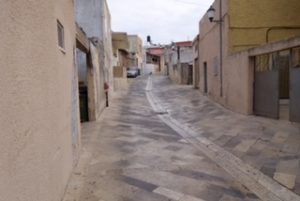
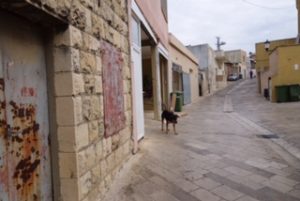
This afternoon, we visited the Druze village Ussefiyeh for a tour and lunch. On the way our friendly and informative tour guide Eric gave us some background on the Druze as well as some points of interest in Israel. There are approximately 11,000 people in the village that we saw but there is a total of 120,000 in 2 major villages. There is a total of 2 million Druze that live throughout the Middle East, including Syria, Egypt (where they originated from), Lebanon and Jordan. Their loyalty is first to family, second local village and lastly country. Progressively these villages have become more diverse consisting of Jews, Muslims, Christians and Bedouin. Their first language is Arabic, second Hebrew and third English. The group lives peacefully with all ethnic and religious groups. They have not pursued an independent state due to the lack of military capability and has a small population. However, the men do serve in the Israeli military and often put on the front lines in conflicts because they speak Arabic fluently.
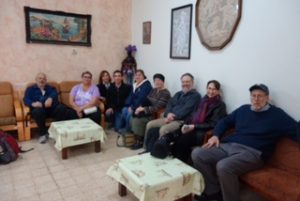
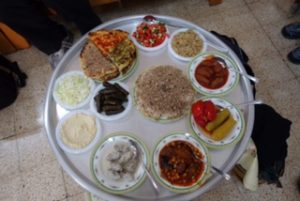
During lunch a Druze resident took us to a restaurant for a delicious meal and discussed the Druze beliefs and life style. At 15 years old, one must decide whether to pursue a secular or religious life. Prior to 15, they must attend school under the religious life rules. Some of the religious life expectations are to only marry another Druze, women may not show any jewelry/makeup, must wear long dresses with head covers, attend place of worship at least two times per week. They live a very strict way of life. People are not to smoke, drink alcohol and are only to vacation to see family members. They believe in reincarnation and that after death they are immediately reincarnated into a new Druze.

There are some similar dietary laws as Jews, such as they don’t eat pork. However, they are able to eat meat with dairy. The secular Druze are not welcomed into the place of worship, but both groups mutually respect one another very much. The only time they are allowed to go into their place of worship is to pay respects to those who have passed away. Lastly, he explained the meaning of the different flag colors and why they are important. Green-nature, red love/courage, yellow-sun and wheat, blue water and heavens and white-purity and peace. We all had an excellent time eating, learning and touring!
– Greg Parrish
Day 2 – Sovev Kinnert Region (Monday, November 28)
Morning – Jordan River Village

On Monday morning, Mali from the Partnership met us at the hotel where we had a delicious buffet breakfast. We got on the bus and headed to our first site, the Jordan River Village. We met up with staff from the Partnership and social workers from the Jordan Valley Regional Council Social Services. We started out by getting to know one another and learned a little more about the Partnership. Raut, the social worker for Jordan River Village, and Yuval, the CEO, told us about Jordan River Village.
The Jordan River Village is a year round overnight camp for children living with serious illnesses and special needs (ages 9-21 for special needs and 9-18 for illnesses). It provides a safe, fun and supportive camp experience at no cost to the families. Every child is allowed to come once a year. For most children this is their first time away from home. The children are chosen based on their type of illness regardless of background, religion, ethnicity, or physical limitations. It is a place where the children “leave their illnesses at the door.”
There are three types of sessions: 5-day sessions for just the children with special needs, 3-4 day sessions and 3-day weekend sessions for families. Also 3 weeks out of the year, children from Gaza and the West Bank can come for a week with one parent.
There are many Counselors and over 700 volunteers ranging in age from 18 – 82. There are approximately 30 sessions a year, and 20 volunteers live here as part of their national service one year before going into the army. There is also a full Medical staff and a specialist doctor for each session. Counselors change every week. They have one day of preparation before the children arrive. The social worker and counselors are trained to not pass judgement on the families.



After we learned about Jordan River Village, Raut took us on a tour. The beautiful campus sits on 64 acres in the heart of the Lower Galilee.
They have everything expected at a children’s camp and more. They have 12 bright and comfortable camper cabins, a communal dining hall, theater, sports center, arts & crafts building, a specially heated and treated pool, library, petting zoo, adventure tower, and more. The Village also has a state-of-the-art, yet unobtrusive 24-hour medical center. We got to see a group of children on their first day. Within minutes, they were all smiling, singing and dancing. It was a joyous sight to see. For privacy reasons, we were not allowed to take any pictures of the children but here are some of the Village.
– Michelle Lafferty
Morning – The Baruch Padeh Medical Center, Poriya
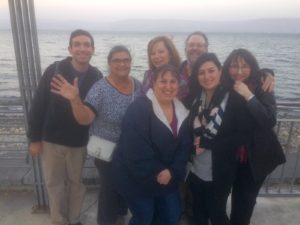
We visited the ER of this 328-bed teaching hospital which offers specialties from cardiology, ophthalmology, to neonatal ICU and pediatrics as well as many others. The Head of the ER, Dr. Eran Tal-Or, explained that they serve Jews and Christians as well as patients from the Syrian population. They are prepared for and hold practice drills to master handling mass casualty events including multiple injuries, chemical weapons, earthquake and toxicological assaults. Their underground hospital is fortified to handle patients in an emergency.
Social workers, in all their departments, are valuable members of the team. They may be needed to deal with guardianship, support families in the event of sudden death, palliative care and other needs. The doctor reports he couldn’t run the ER without the social workers!
We also met with and learned how Dr. Nesya Lang administers the Sexual Assault Treatment Center which was physically relocated from the main hospital to a comfortable non-hospital setting. Every detail is considered with care of the victim to increase their comfort level. Medical clowns are utilized in both the ER and Sexual Assault Treatment Center as well as throughout the hospital as an integral part of the treatment team. Their presence has proved to both reduce the need for patient anesthesia plus reduce their anxiety in order to tolerate procedures in a more relaxed manner. We learned a great deal about Israel’s advanced medical emergency treatment services.
– Susan Esser-Greenberg
Afternoon – Mayor of Tiberias
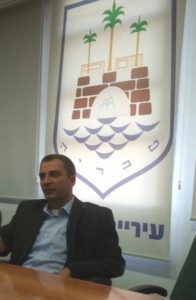
The afternoon and evening were as informative and fascinating as our morning had been.
We met with the mayor of Tiberias Yosef Ben David, who explained to us the art of preparedness of a small town in Israel with just under 50,000 population that can swell to four times the population during high tourism in the summer. Mr. Ben David was animated, humorous and “to the point” regarding the challenges and responsibilities to have appropriate processes in place and test them whether it be for war, terror, or natural disaster incidents.
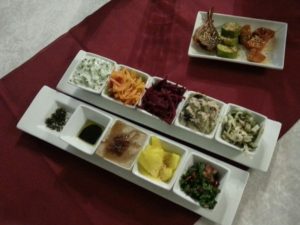
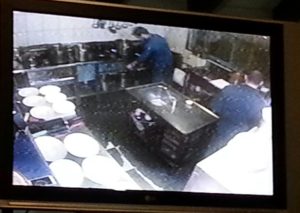
We then traveled to Livnim to experience Roberg – “A Kosher Place to Eat.” It was literally a gastronomical event. The food was colorful, varied, presented in a well-paced and interesting fashion and, of course, very tasty. And if that wasn’t quite enough, you could watch the chef prepare the meal on a closed circuit television.
– Michal Maybello
Day 1 – Arrival (Sunday, November 27)

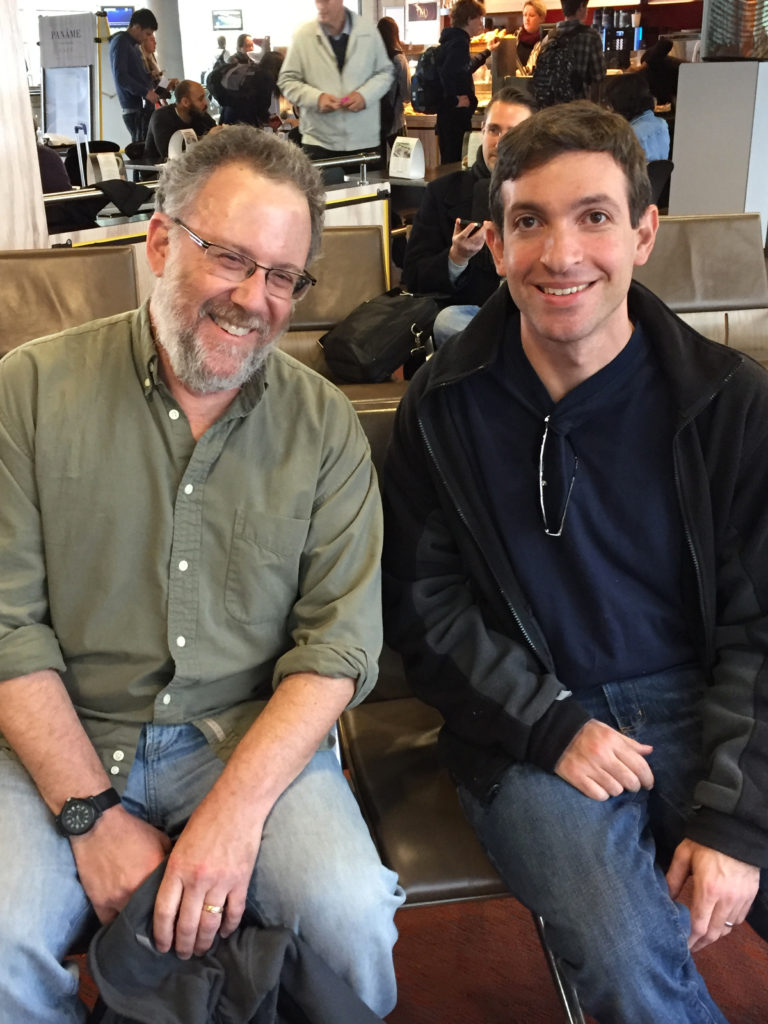
The 2016 P2G Social Work Delegation all are arriving in Tel Aviv, Israel around 4 PM on Sunday. Delegates are traveling from Milwaukee, Tulsa, and Saint Paul. Six delegates are from Milwaukee, one from Tulsa and one from St. Paul. We are all arriving blurry eyed but very excited! Four delegates left from Chicago O’Hare airport and traveled together through Paris for a stop over with the final destination to Tel Aviv at 4 PM.
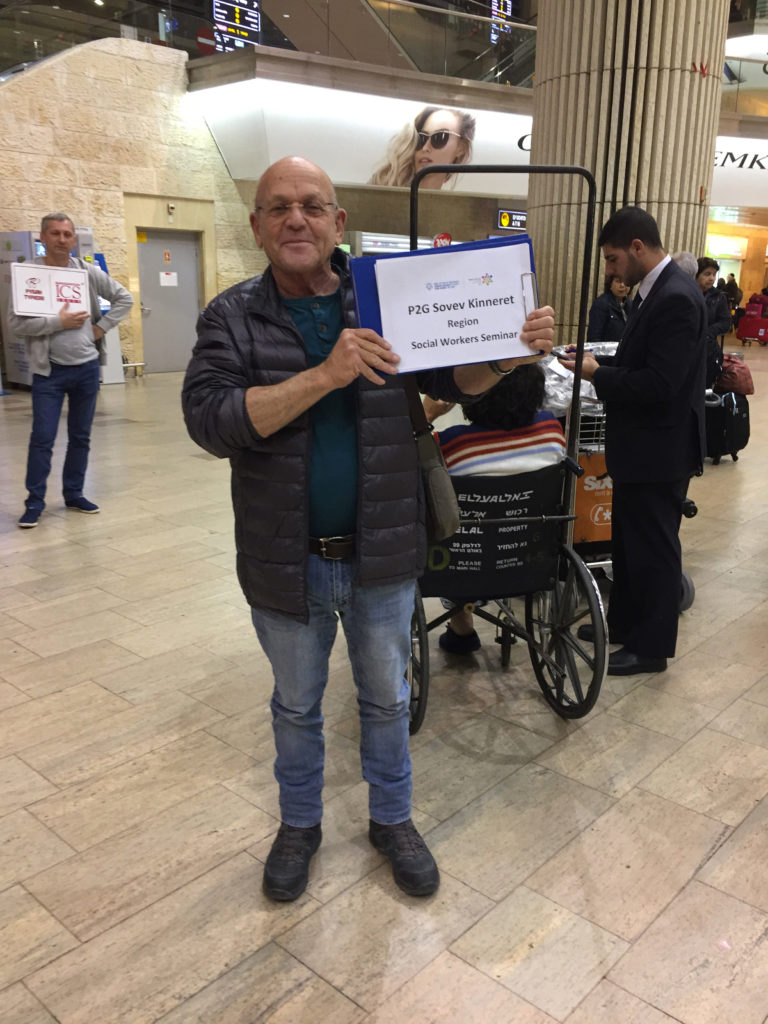
After we were together at the airport, we met our delightful volunteer named, Amir. Amir has been working with partnership for over 10 years. He talked about how important Partnership has been in his own life, personally, and how he has been involved. He said they’re almost 50 different types of partnerships. I look forward to learning more about this! We were all moved by his stories. He even described when there were soldiers killed, how people from Milwaukee reached out and wrote letters. He shared these letters with the family is here in Israel. It was very touching to hear about the person to person and actions made by this program.
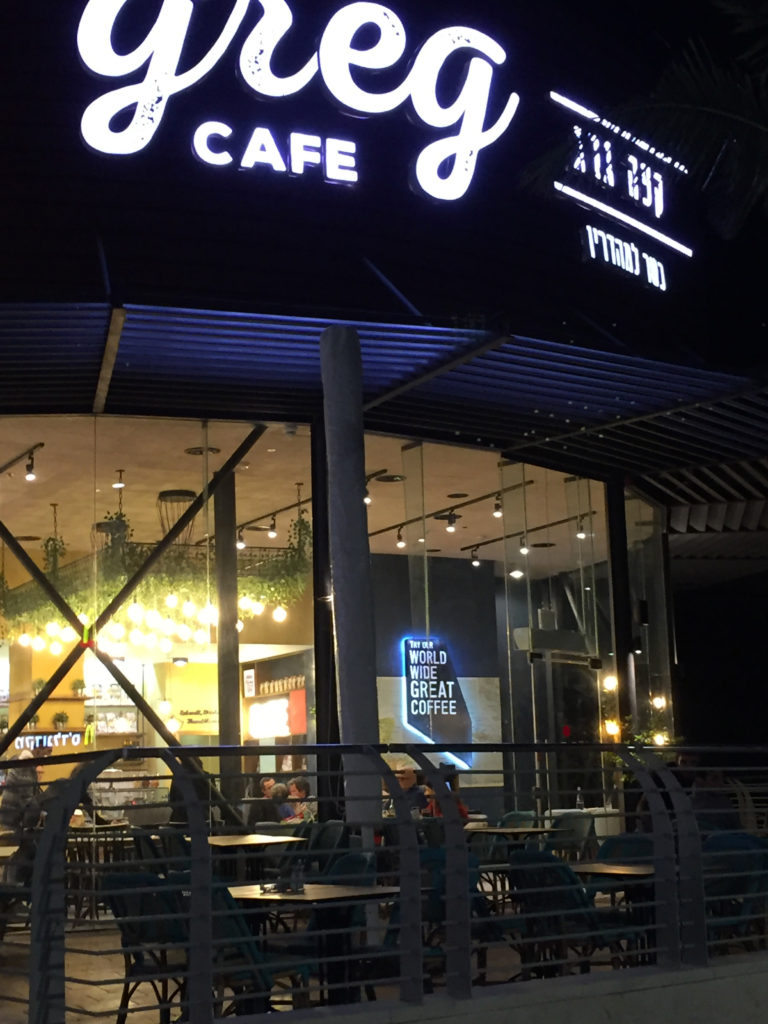
We drove about an hour and 45 minutes from the airport to meet Hadar, Anat and Ahuva Shachor, the Israeli Steering Committee Chair, at a café/coffee house restaurant called Greg Cafe. We took silly pictures of Greg, the participant in the program, because this coffee house was named after him.
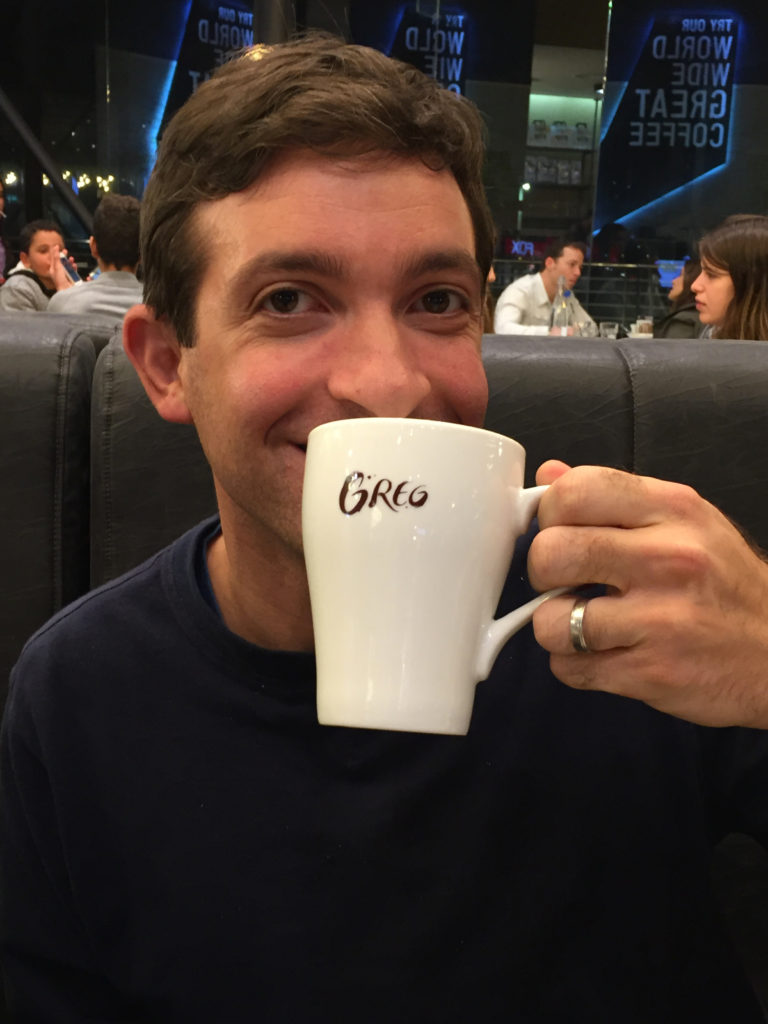
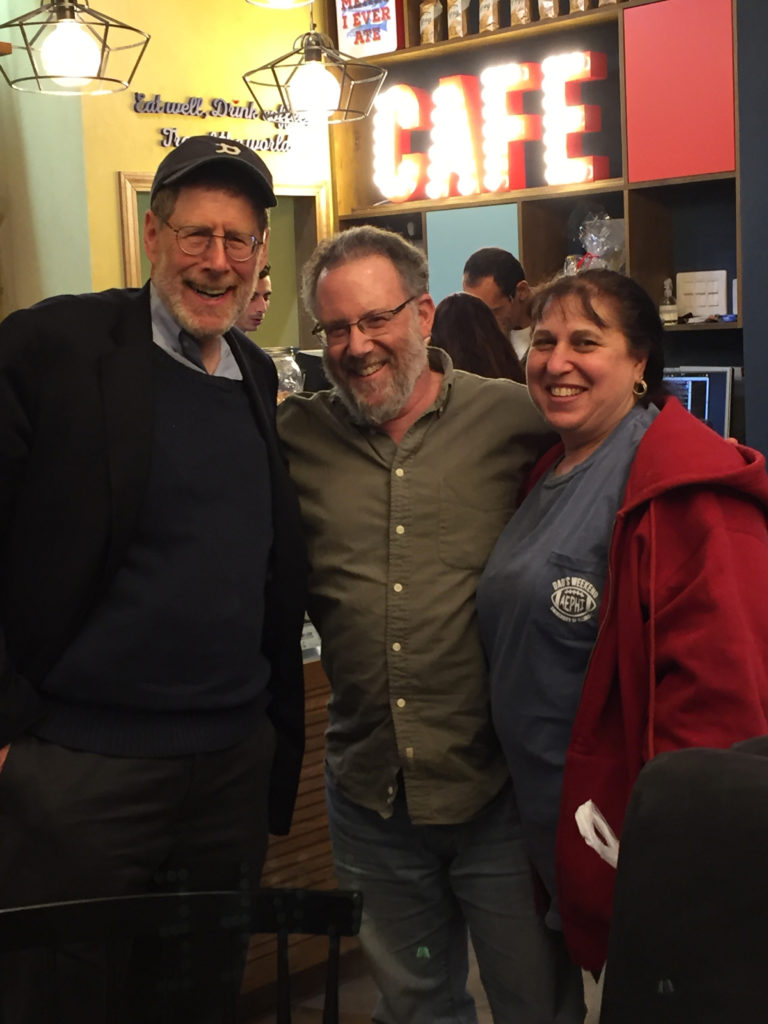
We enjoyed delicious food and just connected. It was very nice.
– Dana


